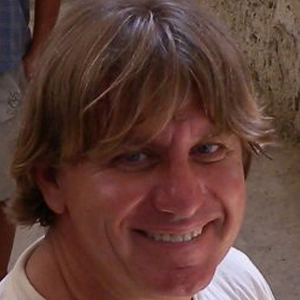
Dr Miomir Korać
Principal Research Fellow
+381 11 3282 081;
+381 11 2637 191
korac.miomir@gmail.com
Scientific adviser Dr. Miomir Korać was the director of the Archaeological Institute in Belgrade from 2015 to 2022. Immediately after graduation, he got a job at the Archaeological Institute, as an assistant for classical archaeology. From 1990 to 1997, he led the corps, and from 1997 he directed the Viminacium project, investigating the Roman city of Viminacium and the camp of Legion VII of Claudius Pius Fidelis. He was a collaborator on several SANU projects: with Academician Dragoslav Srejović – the project “Felix Romulijana-Gamzigrad” and “Roman Imperial Cities and Palaces”, with Academician Slobodan Dušanić on the project “IMS Inscriptiones de la Moesiae Superieure”, as well as with Academician Borislav Jovanović on the “Archaeological Map of Serbia” project
He managed the scientific research project “IRS – Viminacium, Roman city and legionary military camp – research of material and spiritual culture, population, using the latest technologies of remote sensing, geophysics, GIS, digitization and 3D visualization” financed by the Ministry of Education, Science and Technological Development .
Presenting the results of scientific research, from 2007 to 2019, M. Korać held more than thirty lectures based on the results of the Viminacium project, at several universities and reputable institutions: Albany, New York, Boston, Chicago, Los Angeles, San Francisco, London, Milan, Venice, Aquileia, Cologne, Rome, Bordeaux, Berlin, Budapest, Rome, La Valletta, Montevideo, Buenos Aires, Asuncion, Brasilia, Santiago de Chile, Lima, La Paz, Santa Cruz and Prague.
During his work at the Archaeological Institute, M. Korać performed several duties in the Ministry of Science as an expert. From 2004 to 2010, as an expert of the Ministry of Education, Science and Technological Development, he was a member of the Committee for Evaluation of Projects in History, Ethnology, Archaeology, Art History and Musicology. From 2010 to 2014, as an expert of the Ministry of Science, he performed the duties of president of the interdisciplinary committee for project evaluation at the Ministry of Education, Science and Technological Development.
Since 2005, he is the founder and editor of the scientific journal “Archeology and Science”, which has an international editorial staff and is published in a foreign language as well as with a summary in Serbian.
M. Korać and his team built the first archaeological scientific-research center that covers over 5000 m2 under the name – “Domus Scientiarum Viminacium” (Viminacium scientific-research center). In 2014, he opened “Mammoth Park – Viminacium”. This paleontological park houses mammoths that are about 1,000,000 years old, and the fully preserved mammoth is unique in the world.
From the Serbian side, Korać managed six international projects financed by the European Union.
Along with this work, for the last forty years, M. Korać devoted himself to improving the use of computers in archaeology. This resulted in cooperation on joint projects with the Mathematics Institute, the Faculty of Science and Mathematics and the Faculty of Electrical Engineering in Belgrade.
Education
1996 – Doctoral thesis in Archaeology. Faculty of Philosophy, University of Belgrade, PhD: Antique oil lamps from Viminacium
1990 – Master’s degree in Archaeology. Faculty of Philosophy, University of Belgrade. MA: Late Antique and Early Byzantine fortifications near the Confluence of the Slatinska river site and Ljubičevac
1980 – Bachelor’s degree in Archaeology. Faculty of Philosophy, University of Belgrade
Languages: English, German
Most important results:
2015 – Editor of the Starinar journal, Institute of Archaeology, Belgrade
2005 – Editor of the Archaeology journal and editor of the Archaeology and Natural Sciences journal
2015 – 2022 – Director of the Institute of Archaeology Belgrade
2012 – Member of the expert board of the council of the Institute for the Protection of Cultural Monuments of Belgrade city
2012 – 2013 – President of the Board of the Centre for the Promotion of Science
2011 – 2012 – Director of the Centre for the promotion of science in the Ministry of education and science of the Republic of Serbia
2010 – 2014 – President and member of the Interdisciplinary project for evaluation of the projects of the Ministry of Education and Science of the Republic of Serbia
2010 – 2014 – Director of the project IRS – Viminacium, a Roman city and legionary camp – research of the material and spiritual culture, population, application of the modern non-destructive techniques of aerial prospection, geophysics, GIS, digitalisation and 3D visualisation, Ministry of Education, Science and Technological Development, Institute of Archaeology
2010 – 2014 – Director (for Serbia) in the project EU “Т-Pass” (Italy, Slovenia, Spain, and Serbia)
2010 – 2014 – Director (for Serbia) in the project EU “ОpenArch” (Spain, Netherlands, Italy, Sweden, Germany, Finland, Britain, Wales, France and Serbia)
2010 – 2014 – Director (for Serbia) in the EU project “Danube Limes Brand” (Austria, Hungary, Croatia, Bulgaria, Romania and Serbia)
2010 – 2014 – President of the Board of the Institute for History, Belgrade
2007 – 2008 – Assistant of the Minister of Culture for the cultural heritage of the Republic of Serbia
2006 – 2010 – Director of the project “Applying geophysics, GIS, GPR and GPS and new technologies in the research of the Roman city and legionary camp of Viminacium”
2005 – 2010 – Member-expert of the Ministry of Science on the Board for the evaluation of projects from history, archaeology, ethnology and musicology
Director of projects
IRS – Viminacium, a Roman city and legionary camp – research of the material and spiritual culture, population, application of the modern non-destructive techniques of aerial prospection, geophysics, GIS, digitalisation and 3D visualisation – Ministry of Education, Science and Technological Development, Institute of Archaeology
T-PASS – a project that connects one of the most important Roman cities, Aquileia, with Emona and Viminacium, accomplished in cooperation with the Aquileia Foundation (Fondazione Aquileia). Participants in the project: Italy, Slovenia and Serbia
DANUBE LIMES BRAND – realised with co-operation between six Danubian countries: Austria, Slovakia, Hungary, Serbia, Romania and Bulgaria. With this project, Viminacium was, along with other Roman localities situated on the middle course of the Danube, nominated and placed on the tentative list of UNESCO in 2015
OPEN ARCH – EXPERIMENTAL ARCHAEOLOGY – a project realised with 11 countries: Sweden, Finland, Wales, England, Netherlands, France, Spain, Germany, Austria, Switzerland and Serbia. Numerous experiments related to Roman burial customs, everyday life, the Roman army and systems of the Roman State were realised within this project
ANTHROPOLOGIC PROJECT STRONTIUM ANALYSIS – a project in cooperation with the most significant state anthropological collection of Germany, with its seat in Munich
COST PROJECT – COST (European Cooperation in Science and Technology) is a programme financed by the European Union as part of HORIZON 2020, which enables scientists to create interdisciplinary research networks in Europe
Awards and acknowledgements
(2018) Special acknowledgement for Viminacium Archaeological Park. “Živa Award 2018” for the management of the cultural-historical location, Prague 2018
(2017) Stefan the First Award – for contribution to science and culture
(2016) October Award of City of Požarevac for 2016
(2014) ЕXARC award of Netherlands, awarded to the ten best archaeological parks in Europe
(2014) Sretenje Order for distinctive contribution to the Republic of Serbia and its citizens in public, scientific and cultural activities
(2013) Golden badge of the Cultural-Educational Community of Serbia
(2012) Winner of the Captain Miša Anastasijević award
(2011) LUNA-TBWA New York: prestigious international award for outstanding contribution in culture
Bibliography
Monographs
|
|
Chapters in monographs and edited volumes
- Korać, M. Golubović, S. Mrđić N. 2018. Research of Viminacium and its Suburban Zones, in Vivere Militare Est. From Populus to Emperors – Living on the Frontier, II, ur. S. Golubović i N. Mrđić, 41-72. Beograd: Arheološki institut
- Golubović, S. i Korać, M. 2013. Bringing to Life the Ancient City of Viminacium on the Danube, u Presenting the Romans, ur. N. Mills, 65-73.Woodbridge: Boydell Press
- Golubović, S. i Korać, M. 2008. Cremation Burials at Viminacium (I-III c. AD.), u Funerary Practices in Central and Eastern Europe (10th c BC – 3rd c. AD), ur. V. Sîrbui R. Ştefănescu,109-118. Brăila – Braşov, Muzeul Brăilei
Papers in scientific journals
- Korać, M. 2018. Late Roman and Early Byzantine Fortifications Ljubičevac and Ušće Slatinske Reke, Ђердапске свеске 8: 1-198.
- Korać, M. Ricl, M. 2017. New Greek and Latin Inscriptions from Viminacium, Zeitschrift für Papyrologie und Epigraphik 203: 235 – 249.
- Jovičić, M. Korać, M. Mrđić, N. Dimitrijević, V. Chu, S. Kostić, D. Blackwell, B. 2015. The latest steppe mammoths (Mammuthus trogontherii (Pohlig)) and associated fauna on the Late Middle Pleistocene steppe at Nosak, Kostolac Basin, Northeastern Serbia. International Union for Quaternary Research 379: 14–27. http://www.journals.elsevier.com/quaternary-international/
- Muttoni, G. Dimitrijević, V. Korać. M. et al., 2015. Age of Mammuthus trogontherii from Kostolac, Serbia, and the entry of megaherbivores into Europe during the Late Matuyama climate Revolution, Northeastern Serbia. International Union for Quaternary Research 379: 439 – 447.
- Jovičić, M. Korać, M. Mrđićet N. al., 2015. Exposing mammoths: From loess research discovery to public palaeontological park, Quaternary International, 372: 142 – 150.
- Korać, M. Mikić, Ž. 2015. Viminacium – Cemeteries and Burial Locations During the Great Migration Period, Arheologija i prirodne nauke 10:185 – 192.
- Marković, S.B., et al., 2014. Palaeoenvironment and geoconservation of mammoths from the Nosak loessepalaeosol sequence (Drmno, northeastern Serbia): Initial results and perspectives. Quaternary International, Volumes 334-335: 30-39. http://dx.doi.org/10.1016/j.quaint.2013.05.047

